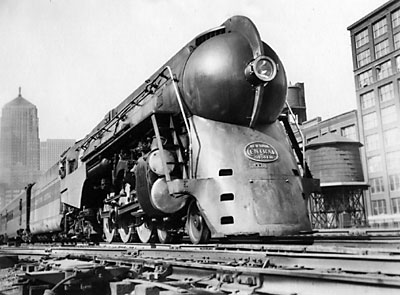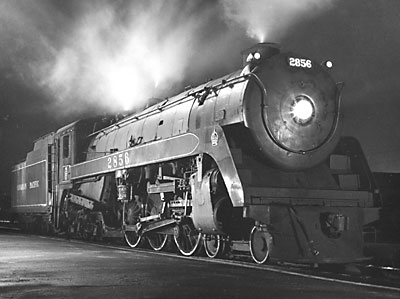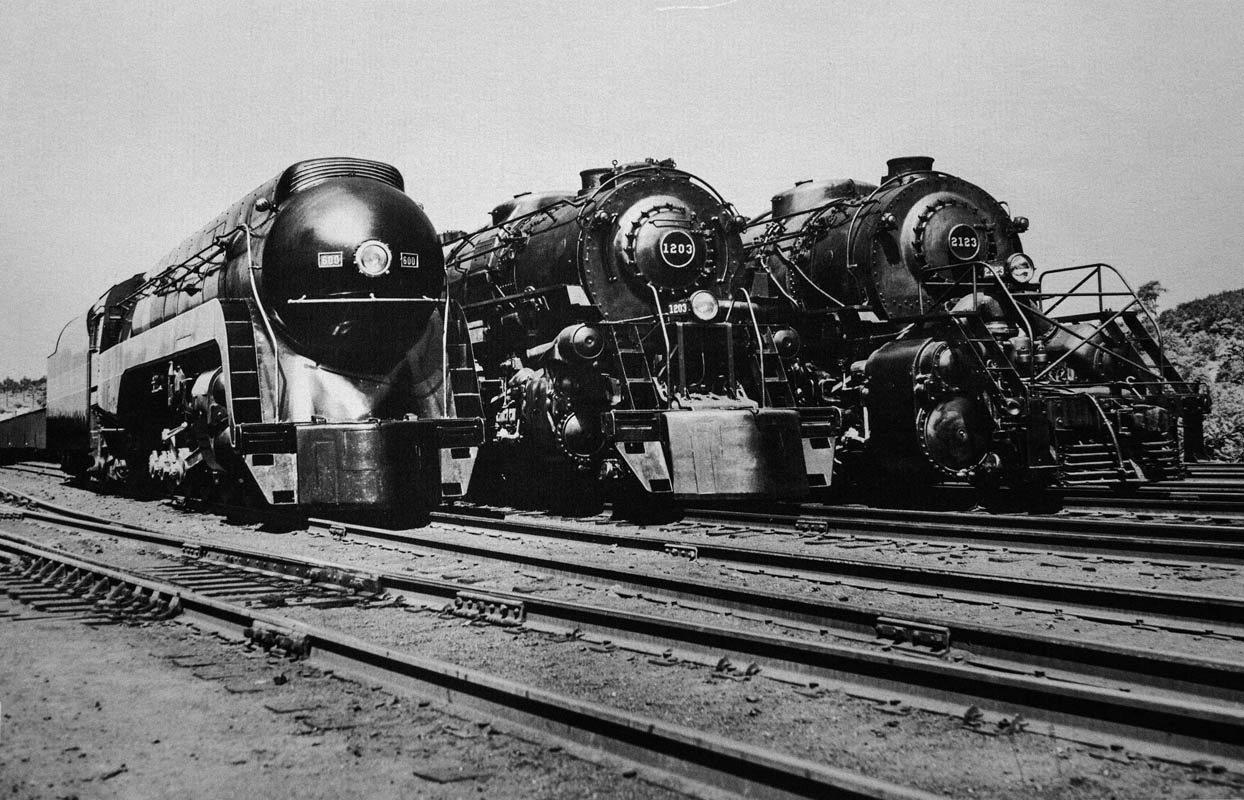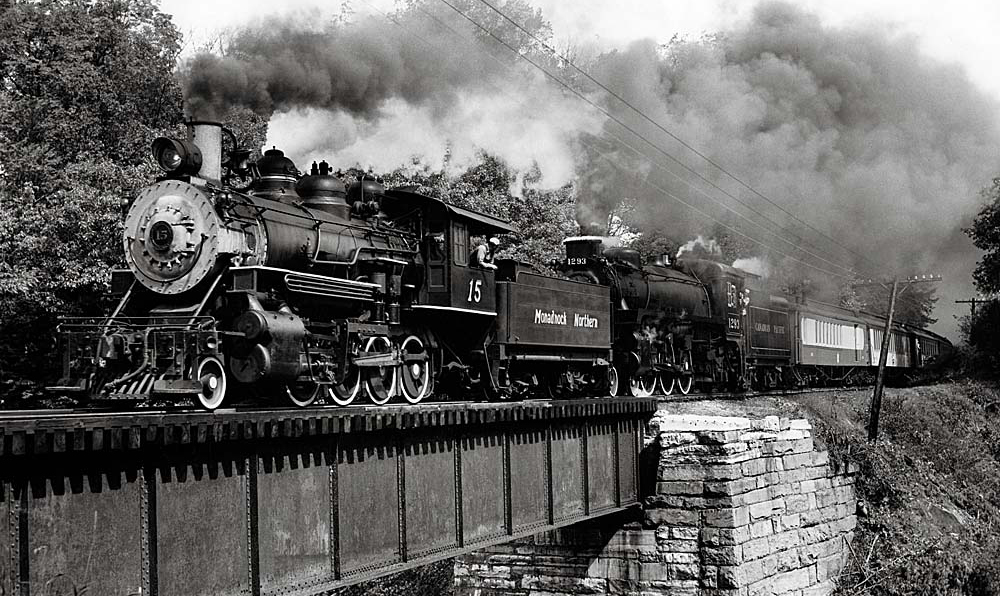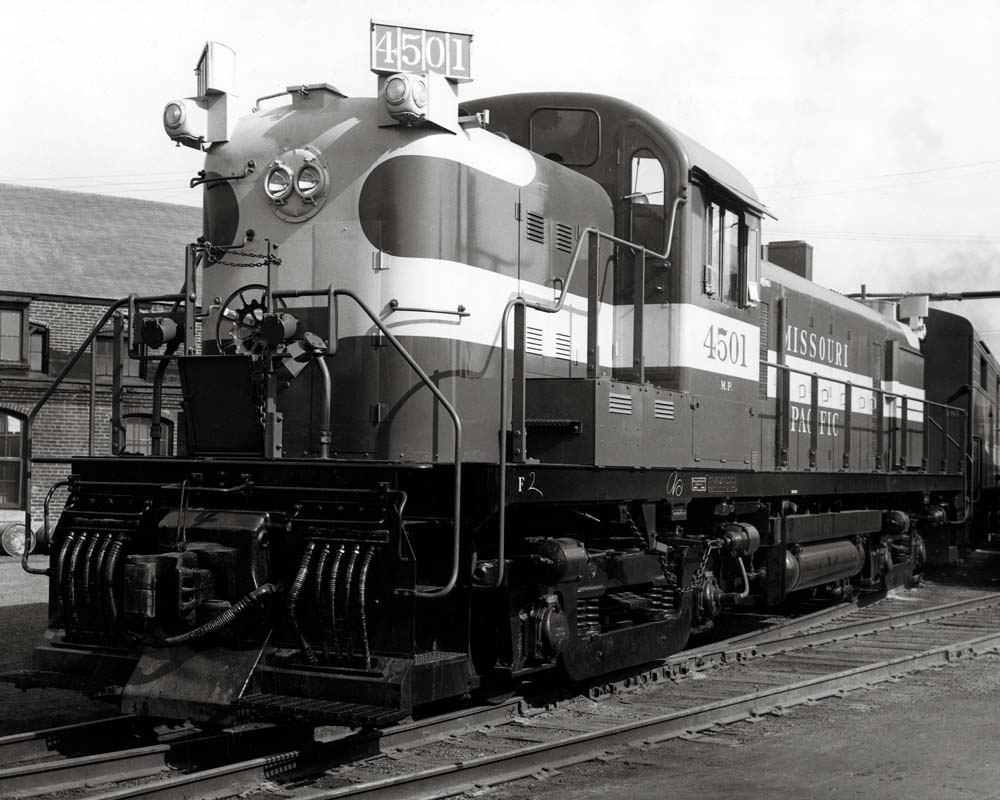More power meant the need to evaporate more water, and this required a big firebox – bigger than could be supported by the 4-6-2’s two-wheel trailing truck. With the lessons learned from Lima’s new 2-8-4 fresh in mind, the New York Central designed its new passenger engine with a four-wheel trailing truck that could support a larger firebox. The resulting locomotive, a 4-6-4 numbered 5200, was delivered by Alco in February 1927.
After a series of trials, during which the locomotive performed brilliantly, the New York Central decided to make the 4-6-4 its standard passenger power. The wheel arrangement was named for the Hudson River, which New York Central’s main line paralleled between New York and Albany (perhaps the most famous segment of the railroad’s “Water Level Route”).
Eventually, New York Central acquired 275 Hudsons in several classes – comprising North America’s largest fleet – with the last delivered in 1938.
In 1934, New York Central’s West Albany shops fabricated the shroud for the first streamlined locomotive in the U.S., 4-6-4 No. 5344, the Commodore Vanderbilt – although it would be ten of Central’s J-3a Hudsons, with their commanding streamlined design by Henry Dreyfuss, that would garner the most attention at the head of the Twentieth Century Limited.
The 4-6-4 was an ideal locomotive for fast passenger service in level territory. It was a stable riding engine at speed, and it had sufficient power to rapidly accelerate its train after stops or stretches of slow running. Other railroads with similar operating profiles began to acquire them.
The next Hudsons went to the Nickel Plate. Indeed, Nos. 170-173 were delivered by Alco just a month after New York Central received the 5200, and No. 170, exists today at the National Museum of Transportation in St. Louis.
For other railroads the Hudson was a specialty engine used either on specific trains or on portions of its lines where conditions favored its use. The Milwaukee Road, Chicago & North Western, and Santa Fe owned engines with 84-inch drivers for high-speed service in the Midwest. All of Milwaukee’s and North Western’s Hudsons were streamlined; Santa Fe shrouded just one. The Burlington operated both standard and streamlined Hudsons. The New Haven had a fleet of ten streamlined engines called Shoreliners that ran between Boston and New Haven.
In all, 487 4-6-4s were built for use in North America. The last delivered were five very large engines for the C&O, built by Baldwin in 1948, and weighing 443,000 lbs. apiece.
Diesel locomotives and passenger train abandonments dealt the Hudson a painful blow in the early 1950s. Many did not last long into the diesel era. They operated longest in Canada and Mexico – in some cases running until the end of steam.
In the United States, the last Hudson operated on the Nickel Plate in 1958.





